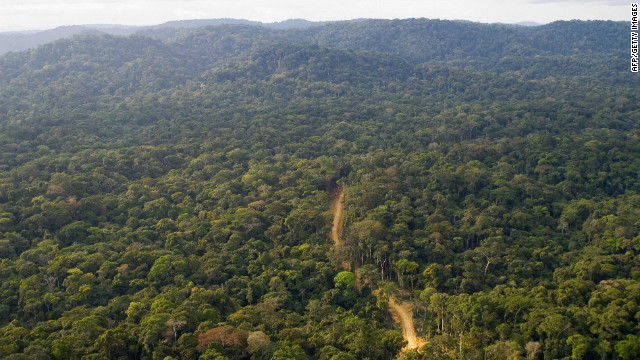Rosemont Copper mining has its own type of mining that has gotten the whole operation as far as it is. There are at least three types of common mining operations. Mountaintop removal, open-pit mining, and strip mining. Being a well known mining operation, Rosemont is a type of mining operation that is more energy efficient than most mining systems. Rosemont Copper Mining, is a mining operation of open-pit mining. noting or pertaining to a type of surface mining in which massive,usually metallic mineral deposits are removed by cutting benches in the walls of a broad, deep funnel-shaped excavation.

What type of minerals are being mined in this process? What are they used for? What are their importance?
In Rosemont's mining system, there is a more environmental process that is gone through in order to save water, and mine different minerals from the Earth's surface. That types of minerals that are mined from this operation are originally; Copper, Silver, Gold, and Molybdenum. All of these minerals from the Earth's surface would be considered high grade ore. High grade ore contains qualitatively large amounts of minerals in the mined ore. The perfect example of that type or ore would be exactly the kind of minerals that Rosemont operations mines. Gold, Silver, Molybdenum, and Copper all come with different uses, different means of importance that have an effect on our society today.
Copper alone has many different uses in many, almost up to all of everyday's appliances and needs. Silver, Gold, and Molybdenum also have a lot to offer in uses and meeting society or individuals needs.
Copper:
http://www.mygoldi.co.il/wp-content/uploads/2011/06/Gold-Currency-1-W976YWZXO5-1024x768.jpg
http://www.neckersjewelers.com/media/slides/hearts_on_fire_2.jpg
http://static.ibnlive.in.com/pix/slideshow/09-2012/the-apple-iphone/09-apple-iphone-5-teardown-fixit.jpg
http://rosemontcopper.com/what-we-mine.html
Copper alone has many different uses in many, almost up to all of everyday's appliances and needs. Silver, Gold, and Molybdenum also have a lot to offer in uses and meeting society or individuals needs.
Copper:
- Electronics
- Aerospace components
- Computers
- Telephones
- Audio and visual equipment
- Money
- Electrical wiring
- Diesel engines
- Jet aircraft
Silver:
- Jewelry and silverware
- Batteries
- Bearings
- Electronics
- Electroplating
- Photography
- Medical applications
- Mirrors and coatings
- Solar energy and water purification

Gold:
- Currency
- Jewelry
- Electronics
- Medical and dental applications
- lasers
- Industrial equipment
Molybdenum:
- Molybdenum is used principally as an alloying agent in steel and cast iron to improve hardness, strength, toughness, and wear and corrosion resistance
What mineral extractions and processing methods are used for this mining operation?
Unlike other mining operations, Rosemont Copper Mining contains a more environmental friendly way of mining for different minerals. Rosemont is a type of open-pit mining process, but much less water is being used, and is a ton more energy efficient when extracting minerals. Through progressive water conservation and recycling techniques, Rosemont Copper will use less than half the water than a traditional mine. Two types of ore-processing will take place: oxide-ore from areas that have been exposed to oxygen or water, and sulfide-ore that is found deeper in the ground. Ore will be processed using both milling and heap leaching technology. Copper, silver, and molybdenum
will be recovered by grinding and froth flotation, with the principal recovered minerals being the copper
sulfide minerals (bornite, chalcocite, and chalcopyrite) and the molybdenum sulfide mineral (also referred
to as “moly”). Copper sulfide mineral concentrate (the end result of the milling process) produced at the
mill facility will be loaded into highway haul trucks and transported off site to a copper concentrate
smelter and metal refinery. Molybdenum concentrate produced at the mill site will be bagged and/or
drummed and loaded onto trucks for shipment to market.
- http://rosemontcopper.com/copper-process.html
- http://rosemontcopper.com/assets/files/MPO/Ore%20Processing.pdf
What Environmental impacts of this mining operation?
There are some environmental flaws that come with the operation of this mining process.
There are some environmental flaws that come with the operation of this mining process.
- Water Contamination
- Animal degradation
- Destruction to a natural ecosystem
What are the environmental restoration/reclamation for this mining operation?
With the environmental flaws The Rosemont Copper Mining operation has its many corners during its entire mining process, The way that Rosemont mines its ore and minerals is a very environmental friendly way of mining. The restoration of the environment around the mining process shows that there in a an effort in trying to keep the environment the clean. One of Rosemont's Copper Mining restoration is Cattle for Soil Development. This entire source of environment restoration is based on bringing fresh soil and revegetation back to the the landscapes that had affected by mining practices in large-scale. To support revegetation activities, Rosemont Copper has created the Rosemont Cattle Company with the intention of using cattle as a part of the seedbed preparation process.
Native seeds can be difficult to grow and reproduce. Cattle come into play in a big way to assist in this process. Seeds do better if incorporated into the soil so they don't dry out and blow away. Cattle hooves can press the seed into the soil where it has a better chance of survival. Grazing cattle create textured soil which helps capture water and nutrients.
The natural action of cattle grazing help stimulate vegetable growth by trampling weeds and eating weed flowers. In addition, the production of manure provides benefits for reclaimed lands. Cattle can be utilized in areas of poor growth to concentrate manure to increase microorganism populations and soil fertility.
Work Cited:
"Open Pit Mining." Dictionary.com. Dictionary.com. Web. 17 Mar. 2015. <http://dictionary.reference.com/browse/open-pit>.
"Rosemont Copper | Cattle and Revegetation." Rosemont Copper | Cattle and Revegetation. Web. 17 Mar. 2015. <http://rosemontcopper.com/cattle.html>.
"A Copper Process That Minimizes Water Usage." Rosemont Copper. Web. 17 Mar. 2015. <http://rosemontcopper.com/copper-process.html>.
"Minerals We Mine at Rosemont Copper." Rosemont Copper. Web. 17 Mar. 2015. <http://rosemontcopper.com/what-we-mine.html>.




